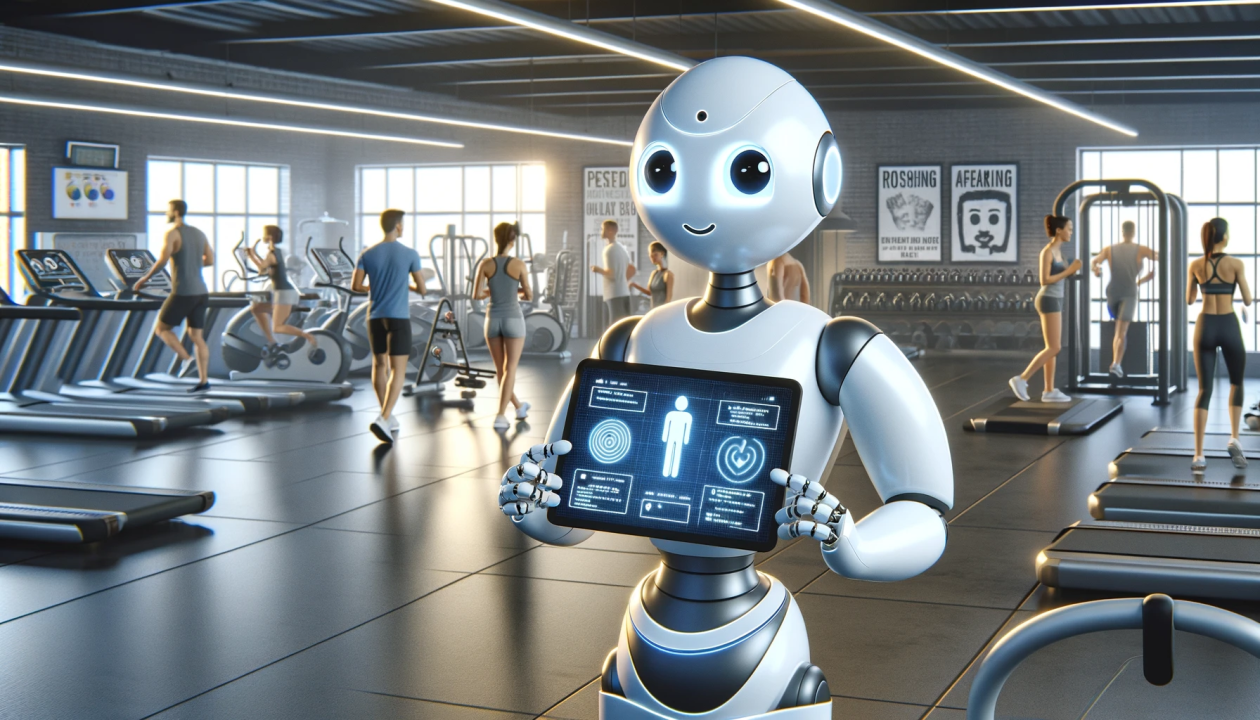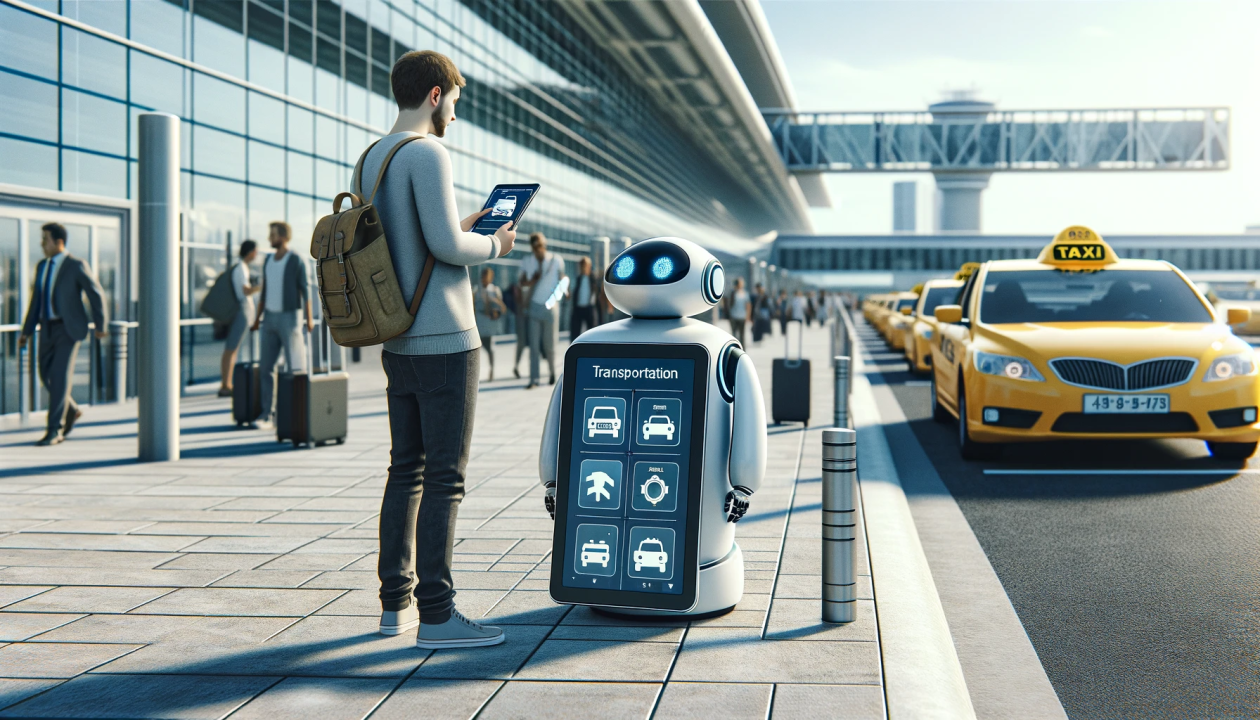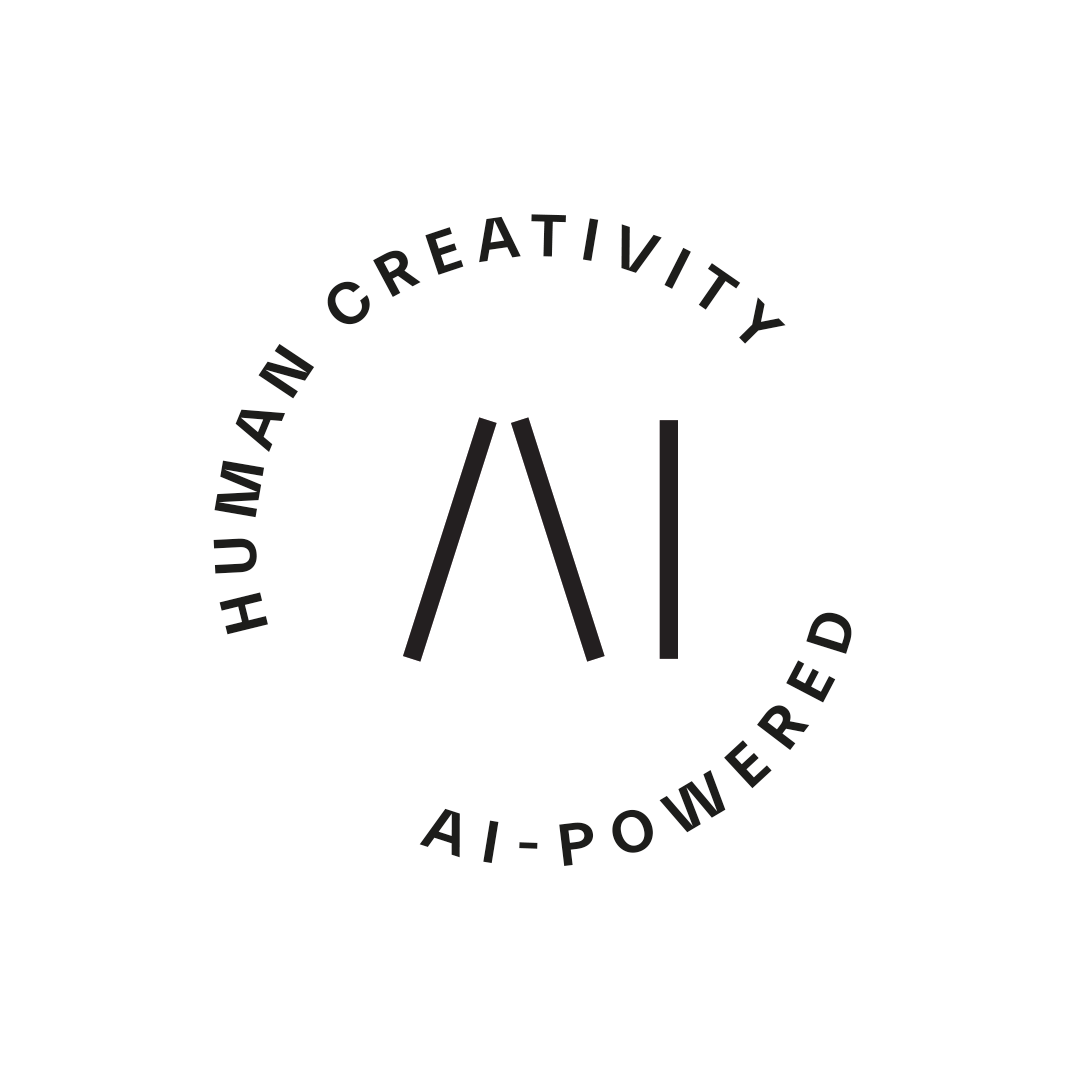
Generative AI has swiftly emerged as a leading topic among business and IT decision-makers at all organizational levels. It's even gracing the agenda of board meetings in the largest corporations.
Unlike previous technological innovations, Gen AI exhibits strikingly human-like capabilities. It has the potential to augment human intellect with an impressive sense of authenticity. Gen AI excels in areas where traditional AI has struggled, particularly in processing unstructured, real-world data and creating novel content. It adeptly navigates the vast amounts of imperfect, unstructured data that our world is full of, a task at which traditional AI often has challenges.
This article is based on the "Gen AI of the Week" LinkedIn Pulse series by Sami Urpila, Siili's Head of Data & AI and Solution Sales, pondering the applicability of Gen AI in different domains. For Sami's original LinkedIn Pulse posts, go to his LinkedIn Pulse page.
The launch of ChatGPT marked a significant milestone, with its rapid adoption by the general public. ChatGPT has essentially become a universal knowledge repository, capable of answering virtually any question. This access to seemingly boundless knowledge is now available to everyone. With advancements like Retrieval Augmented Generation, these capabilities have been adapted for more specialized environments. They're now aiding organizations in a number of different processes, providing huge potential for increased efficiency and a better customer experience.
It's no surprise, then, that Gen AI has been the foremost topic of discussion over the past year. While there are still notable limitations to what current technology can achieve, the potential for creative application is immense. We're only beginning to uncover the full range of possibilities this new 'superpower' offers organizations.
Inspired by these opportunities, we've decided to share some of the most intriguing use cases we've been working with over the past year, as a weekly series ‘Gen AI Use case of the week’. To protect our clients' unique business contexts and competitive advantages, we'll present most of these cases as generalized concepts rather than detailed business scenarios.
Use case #1: AI-powered content creation
Generative AI is revolutionizing the landscape of content creation, offering an unprecedented ability to efficiently produce new, original content for a variety of purposes. This innovation is transforming the creation processes for all the widely used content types, including text, images, videos, and voice, predicting a significant evolution in for example marketing efficiency.
From creators to expressors
The change will have a huge impact on the roles of creative professionals, shifting from traditional content creation to a new era of expression. These professionals are transitioning from being the sole creators to becoming expressors, utilizing AI tools to articulate and realize their visions. With AI solutions, they can generate content that perfectly embodies their creative intent, redefining their roles and workflow in the content creation process.
Workflow example: Writing the "Gen AI use case of the week" series
A good straightforward example of an AI Powered content creation process is how we create our "Gen AI Use Case of the Week" article series. Our process begins with an idea, typically inspired by a compelling case study, and unfolds through several key stages:
- Idea Generation: We choose the topic based on a case study we’ve conducted, and develop the initial ideas through brief brainstorming between colleagues who are the experts on this field. During the brainstorming process we may use A Gen AI bot to gather additional perspectives to enrich the topic.
- Drafting: Initial ideas, the key messages and storyline are quickly drafted into a rough text document, typically writing some bullet points or dictating a draft of the text using simple speech-to-text tools for efficiency.
- Validation: Next, we do fact-checking with our Gen AI bot, aiming to identify potential inaccuracies or controversial claims. (A word of caution: Generally speaking Gen AI should not be solely relied upon for fact checking, but for blog purposes it works fine).
- Text generation: Once the idea and message are ready and validated, we employ Gen AI to refine the draft into a polished blog post, maintaining a consistent tone of voice throughout the series.
- Personal Touch: In the end we make final adjustments, typically changing some wordings by hand, to ensure the content authentically represents the intended message and voice.
- Visual Creation: The final stage is to produce visuals for the article with a Gen AI image generator, further enhancing the reader's experience. This typically requires a few iterations to get the visuals right.
The main tool for this workflow has been an Open AI custom GPT using a GPT-4 model. The GPT was created for producing content with a tone of voice that is optimized for our topics and target group, keeping a consistent tone across different articles. For visuals we use DALL-E, which provides an excellent interactive way to iterate the pictures to be suitable for our purpose.
We’ve learnt that this workflow, combining generative AI with human oversight, enables efficient content creation, still keeping it personal and relevant.
The era of hyper-personalization
The simple AI-powered content creation we covered in our example is just a beginning of the evolution in marketing. Another groundbreaking development brought about by Generative AI is the advent of hyper-personalized marketing. This approach allows for each marketing message to be finely tailored to the individual, based on:
- Using detailed customer segmentation and historical data as a basis for personalization
- Integrating company, product and campaign specific information to the message
- Utilizing generative AI to craft messages that not only resonate with the recipient's preferences but are also delivered in their favored tone of voice
- Implementing A/B testing for continuous content optimization
At the moment we see many companies experimenting with these kind of approaches, taking content creation yet to another level, being both highly efficient as well as extremely well personalized for the target group.
AI-powered content creation: Final thoughts
Generative AI is poised to redefine creative content creation, as well as the broader domain of marketing. While marketing presents a natural starting point for exploring generative AI due to the relatively low risks associated with content accuracy, the importance of human oversight cannot be overstated to ensure the quality and authenticity of the messaging.
Furthermore, the increasing amount of machine-generated content raises important questions about the preservation of diversity and originality in our cultural landscape. While machine created content is becoming abundant, we will be seeing AI models that are trained with AI-generated content, creating a feedback-loop which may lead to unexpected phenomena.
We will explore these issues, as well as other questions around creativity and AI, more in our future discussions, as we continue to navigate the balance between embracing technological advancements and preserving the essence of human creativity.
Use case #2: Unleashing back-office productivity
Organizations have for a long time put a significant effort into streamlining labor-intensive background processes, which typically:
- Involve handling a number of documents
- Span multiple phases
- Require decision-making involving various departments and roles.
Technologies such as Business Process Management (BPM), Robotic Process Automation (RPA), and machine learning (ML) have been instrumental in making these processes more efficient, yielding already substantial productivity gains across sectors. Processes such as insurance claims, loan applications, various public sector processes, and finance operations are prime examples of areas impacted by automation.
The biggest limitation in automating these processes has often been the quality of human input. Automation solutions have historically relied on deterministic rules or machine learning models that need high-quality data. However, human-generated inputs, typically unstructured and varied, pose a significant hurdle, requiring extensive manual effort to interpret and transform this input into a machine-understandable format.
Example: Invoice processing
During our recent work, we have on many occasions discovered that Generative AI has excellent capabilities in processing imperfect, varied human inputs and extracting essential facts. This capability is promising to take the back-office process automation efficiency to a next level. A recent example from invoice processing highlights this potential.
One of our customers faced a challenge of processing invoices from various partners, each of them containing same key information that was essential for process automation, but presented differently in each invoice. For this type of challenge, traditional forms of automation had been previously unfeasible. We decided to test whether Generative AI would help to solve this challenge, and created a simple process where:
- A Gen AI bot reads an invoice that is in a proprietary format of a partner and looks up specified data elements
- The bot then generates a JSON message containing the data in structured and standardized format
- The JSON message is sent to further processing in the back-end processes.
The results are promising: We achieved an impressive 85% accuracy rate already in its initial test run, based on a simple prompt. After a few additional iterations with the most difficult cases, the results are still improving. The solution, which traditionally would have required dozens of custom document parsers, was implemented rapidly with mostly off-the-shelf Gen AI capabilities.
Unleashing back-office productivity: Key learnings
The insights from this case study underscore the strengths and limitations of Generative AI in back-office processing:
- The off the shelf capabilities are astonishing – we achieved a significant success rate with quite straightforward prompting
- The real effort lies in getting the <10% of cases correct. The most difficult cases are the ones where there are ambiguities in data.
- The cost efficiency of the solution is remarkable, promising an almost immediate ROI for large masses of document.
A significant feature of this approach is re-usability – the same concept can be used in a variety of similar settings.
Looking forward, Generative AI's ability to process unstructured human input into structured data that machines can understand will likely become an integral tool for developers. This technology offers a new frontier in automating back-office processes, promising substantial efficiency gains and redefining how organizations manage their operations. Potential for these kinds of solutions is still largely untapped, and there is a lot to gain by being able to integrate Generative AI with the more traditional tools for process automation.
Use case #3: AI fitness coach
Professional coaching services span a number of topics, including fitness, health and wellness, relationships, career, and financial coaching. Traditionally, these personalized services have been a luxury afforded mainly by the wealthier segments of society, primarily due to their high costs. Despite the potential benefits that coaching offers to many, the price tag has remained a significant barrier to widespread access.
The impact of generative AI on professional coaching
The rise of generative AI is set to revolutionize the coaching landscape, making professional coaching more accessible to a broader audience. Generative AI, with its ability to generate relevant content from diverse sources and contexts, offers innovative solutions for personalized coaching. This includes:
- Personalized Learning Plans: Tailoring learning experiences based on individual profiles and a vast library of best practices.
- Real-time Progress Monitoring: Enabling continuous feedback on a user's progress, adapting to their evolving needs.
- Customized Communication: Matching the tone and style of communication to the personality and preferences of the coachee, enhancing the coaching experience.
Example: Fitness coaching with AI
Let’s have a look at an example, where an AI fitness coaching concept was developed for a leading fitness chain. The concept was created to address common problem of losing motivation among new gym members. The AI coach was designed to be equipped with the chain's comprehensive knowledge of fitness related topics, capable of offering both practical workout guidance and emotional support to keep users engaged and motivated. The Fitness Coach was designed to seamlessly integrated into their existing mobile app, which already boasted an extensive array of workout content.
With the ability to customize its personality, the AI coach can offer a unique, personalized experience, actively creating workout plans, providing nutritional advice, and celebrating user achievements. This digital companion aims to transform the fitness journey, making it more accessible and enjoyable, and ensuring that staying fit was not just a goal but becomes a sustainable lifestyle for every user.
The AI Fitness Coach is a personalized, fun, exciting and engaging way motivate the new members, being a perfect solution for the purpose. However, working with the topic did raise some thoughts on risks involved when looking at AI Coaching in a wider perspective. Notably:
- Risk of false advice: In areas of deep personal significance, incorrect advice could be profoundly harmful. Knowing Generative AI’s tendency to ‘hallucinate’, it's crucial to limit AI coaching to low-risk topics and rely on curated, high-quality content.
- Target user groups: Considering the delicate nature of coaching work, AI coaching services should be offered for purposes where the impact of incorrect advice are not severe, and totally avoiding vulnerable populations.
- Data Privacy Concerns: The sensitive nature of data handled in coaching necessitates a high level of privacy and data protection while implementing the services.
With these safeguards, AI-assisted coaching represents a powerful tool to democratize access to coaching services. Yet, we must exercise caution in its application, ensuring it complements rather than replaces the human element in coaching.
AI coach: Final thoughts
Despite the technological capabilities of AI in coaching, the value of human interaction remains irreplaceable for both the coach and coachee. While AI might someday technically be able to do any type of coaching with high reliability, for many the coaching relationship as such is a valuable human connection and shared experience for both persons.
This brings us to the ethical considerations surrounding AI's role in our lives. As we advance technologically, we must discern which aspects of our human experience we choose to entrust to machines and which we preserve as inherently human activities. Coaching, with its intimate and personal nature, stands at the forefront of this ethical debate.
Let's take an extreme example: While an AI coach might someday be able to teach a child to take their first steps, this moment embodies more than just physical support. Very few parents would like to miss this experience for any price - even though AI could make their lives a lot easier.
In conclusion, as generative AI continues to evolve, it holds the potential to transform coaching services, making them more accessible and personalized. But the biggest question is not about technical feasibility, but what it means to be human in an increasingly digital world.
Use case #4: AI travel companion
Travelling to new places often comes with its set of challenges, such as finding local services, understanding cultural norms, getting emergency assistance, and discovering points of interest. But with only a limited time available during the journey, the last thing travellers want to do is spend time doing research at the destination. Generative AI is emerging as a powerful tool to address these needs, simplifying travel with accessible, tailored information.
The impact of Generative AI on travel
Generative AI is transforming travel by offering quick and customized access to information in various languages through an easy-to-use chat interface. This technology is especially useful for travelers seeking instant assistance. Here's how Generative AI is making a difference:
- Personalized Itineraries: AI analyses travelers' preferences to suggest customized plans that include sightseeing, dining, lodging, and local activities, creating a tailored travel experience.
- Cultural Insights: To help travelers adapt to new environments, AI provides essential tips on local customs and etiquette.
- Emergency Information: AI swiftly delivers details on nearby emergency services like hospitals and consulates, offering crucial support in critical situations.
- Travel Documentation Help: AI simplifies the often complex process of understanding travel documentation requirements, providing guidance on visas, insurance, and other necessary paperwork.
Example: Travel assistance solution for an insurance company
An Insurance company wanted to develop an AI-powered travel assistance solution, leveraging LLM’s. The goal was to support customers throughout their journey, from planning to travelling. By using reputable data sources and integrating with Google Places API, the solution provided information on travel requirements, safety tips, and medical assistance contacts. The system utilizes an “AI agent model” with LangChain, where a network of specialized LLM agents collaborate to solve user queries efficiently.
The project revealed several insights:
- Breaking complex tasks into smaller parts allows AI to handle them more accurately and efficiently.
- There are highly effective strategies to minimize the hallucination problems and applying guardrails for the AI laying out its boundaries, to ensure that AI's advice is dependable and based on curated information.
- Providing AI with contextual details, like the user's location, can streamline the process and enhance response precision.
Looking ahead, the potential for Generative AI in travel is vast. It enables travelers to spend time on the most meaningful things to do during the journey, allowing them to focus on making memories rather than logistical research.
Interested in how Generative AI can improve travel experiences? Go to Sami Urpila's original LinkedIn Pulse article and leave a question in the comments section.
Use case #5: Efficient automated translation
In our globalized, multicultural society, translation plays a key role in bridging gaps between languages and cultures. Similarly, for businesses and organizations globally, efficient translation offers tangible benefits. These include improved access to information, boosted international commerce, and enhanced multilingual customer service.
While IT solutions for translation have existed for years, Generative AI is revolutionizing this domain. It offers superior contextual understanding and better grasps cultural subtleties, leading to higher quality translations and reducing the need for manual intervention.
According to our experience, AI has several noteworthy applications in translation:
- Localizing digital content for multicultural audiences, by translation either during the content creation phase for more control, or on-the-fly for cost efficiency.
- Real-time translation in customer service, using bots that provide multilingual support based on source documentation in a single language.
- Translating complex and domain-specific documents, such as legal and medical texts, where accuracy is paramount. Here, Generative AI aids in translation while maintaining necessary human oversight.
A recent implementation at Aalto University exemplifies this. We enabled content editors on aalto.fi to request automated translations. The process involves sending the original text to DeepL, specifying the desired language, and receiving the translated text in seconds. Editors can then refine this output. This solution has shown excellent initial results and is made accessible to all Drupal developers on Drupal.org. It allows for easy integration of any chosen translation service into Drupal sites.
For more challenging domain-specific translations, Generative AI proves invaluable. We have also been recently exploring Gen AI in more demanding domain specific translation tasks. We trained a custom AI model on domain-specific terminology to translate English publications into local languages, incorporating domain specific jargon and expressions. Initial results are also promising, but we’ll get back to this topic in later in more detail once we get more concrete results to share.
Overall, AI is proving to be an outstanding tool for various translation tasks. However, it is crucial to include human oversight in translations that require absolute accuracy to prevent risks to health or to avoid financial or reputational damage.
With these safeguards, AI is an exceptional asset for translation tasks. There is a huge potential not only for companies, but for our society overall, the ultimate use case being improving understanding among people with AI, and eventually contributing to a more peaceful world without barriers.
Interested in exploring more with us? Let’s discuss further! Go to Sami Urpila's original LinkedIn Pulse article and leave a question in the comments section.
Use case #6: AI lawyer
or many years, information technology has played a crucial role in automating human tasks. Initially, automation primarily focused on simpler, repetitive tasks, largely due to the capabilities and nature of the technology available at the time. This technology, being procedural and rule-based, was best suited for deterministic tasks. For instance, a typical automated process might involve shipping products to customers who have paid, provided the items are in stock, or reordering from the manufacturer otherwise.
However, this trend is evolving with the advent of Generative AI. Unlike traditional technologies, Gen AI is capable of handling complex tasks that require extensive knowledge and holistic thinking, areas once considered exclusive to human expertise. This shift suggests that tasks demanding high-level education and experience, such as those in white-collar professions, are no longer immune to the influence of automation.
One field likely to be significantly impacted by Gen AI is the legal profession. Traditionally, successful lawyers are known for their comprehensive legal knowledge, exceptional analytical and research skills, and ability to work efficiently under pressure. Gen AI is rapidly advancing in these areas and is likely to even surpass human capabilities, promising a boost in productivity for lawyers’ work in areas like legal research and analysis of large documentation sets (eg. due diligence work).
A practical example of Gen AI's application in the legal field can be seen in our recent project for Fondia, a full-service business law firm and a pioneer in exploiting new types of service models and technologies. In collaboration with the Finnish startup TekstiAi, we developed an AI-powered legal service for Fondia’s clients. This service, based on ChatGPT-4 and Fondia's legal insights database, assists users in finding legal insights through an interactive chat interface. The system was carefully designed to minimize errors (‘hallucinations’) and provide reliable information.
The project revealed that while current AI cannot independently interpret Finnish law or make legal decisions, it is highly effective in extracting insights and creating summaries of legal topics. This implementation confirms the potential of Gen AI in transforming the legal field, demonstrating its ability to provide valuable legal insights, a trend that is expected to grow in the future.
But when it comes topics like nuanced judgment, ethical considerations, contextual understanding and creating trust, Gen AI clearly still falls short in the needed capabilities. Thus while Gen AI can greatly enhance productivity, we believe it will not be a complete substitute for human lawyers in the foreseeable future.
Interested? Let’s have a chat! Go to Sami Urpila's original LinkedIn Pulse article and leave a question in the comments section.
Use case #7: Field service
For businesses in the heavy machinery manufacturing sector, field service is a key component of their service offerings, playing a vital role in ensuring the proper functioning and durability of their equipment, as well as enhancing customer experience. Field service not only gives these companies a competitive advantage in their machinery business but also serves as a significant additional revenue stream for many.
Customers using these machines prioritize high-quality service for the safety, longevity, and uninterrupted operation of their equipment. In industrial settings, any downtime of heavy machinery can be extremely costly and lead to major disruptions in factory production.
Service technicians maintaining these machines in the field face demanding work. It requires extensive experience due to the complexity and advanced technology of the machinery. There is often a shortage of technicians who possess the necessary skills, and becoming an expert in this field requires years of practice.
In our recent co-operation with heavy machinery manufacturers, we have have identified similar opportunities to leverage generative AI across the industry sector. With its ability to process and summarize large volumes of written information, generative AI can greatly assist field service technicians in conducting service and troubleshooting.
The implementation involves using generative AI to digest service manuals and other relevant documentation, creating a conversational interface for technicians. This system can be enhanced with historical service logs and best practices, effectively creating a comprehensive service knowledge hub containing both official documentation and practical insights from past service experiences.
This AI-powered solution offers several advantages:
- It provides technicians with a user-friendly, conversational interface for on-the-road troubleshooting.
- Technicians gain easy access to the latest service manuals and logs of successful past service operations.
- Machine manufacturers and operators benefit from more efficient servicing, reducing machine downtime and improving service reliability.
- Maintenance quality is heightened with fewer repetitive faults.
- It ensures consistency in service and facilitates the sharing of best practices among technicians, which is particularly beneficial for those with less experience.
This kind of an approach presents a compelling business case for many companies. If you're interested in exploring this further, let's discuss! Go to Sami Urpila's original LinkedIn Pulse article and leave a question in the comments section.
Use case #8: AI-assisted software development
Gen AI's remarkable ability to create structured text responses to various questions is well-known. But interestingly, this capability extends beyond spoken languages to include programming languages. This means Gen AI can produce large quantities of functional software code through intelligent prompting.
Despite being a relatively recent innovation, Gen AI has rapidly taken a place as a daily tool for a significant part of software developers. Our own research and discussions with our clients indicate a potential productivity improvement of 30-50% currently achievable with Gen AI. This advancement will significantly enhance developer productivity, alter the role of software developers, and reshape the necessary skill set.
However, the full implications of this technology are still unfolding. Two key insights have emerged: firstly, proficiency in crafting prompts, or 'prompt engineering', should be a priority in a developer's learning journey. Secondly, surprisingly, the effective use of AI in programming places greater value on developers' experience. Solid expertise in software development is crucial for maximizing productivity benefits with AI, rather than being overwhelmed by the volume of generated code.
But this is just the beginning. We envision AI fundamentally transforming the value chain and commercial models of IT Services industry in the long term. Imagine a future where comprehensive IT solutions are built through a few well-crafted prompts. Traditionally, software development discussions have revolved around time metrics like hours, days, or full-time equivalents. However, if AI becomes the primary source of software code, these time-based metrics and the current models of buying and selling custom software may become outdated.
At Siili, we are committed to being a forerunner in this transformation of IT Services industry through AI-driven software development. We have already engaged with over 20 large companies in AI-assisted development and are actively participating in academic research to further understand this phenomenon. We invite you to join us on this exciting journey.
Interested? Let’s have a chat! Go to Sami Urpila's original LinkedIn Pulse article and leave a question in the comments section.
Use case #9: Company knowledge hub
In most organizations larger than small startups, there is a wealth of internal guidelines, work instructions, background research material and other critical data essential for maintaining efficient daily operations. This data is usually stored across various intranet applications or databases, making access somewhat challenging and time-consuming for employees. This is particularly true for infrequently used instructions, such as HR related questions.
Generative AI offers significant benefits in this context, by serving as an assistant within a centralized knowledge hub. The assistant simplifies the process of finding answers to practical workplace questions. This approach is suitable for companies of all sizes, typical use cases including:
- HR processes: Access to company policies, benefits, leave entitlements, and onboarding procedures.
- IT support: Handling repetitive inquiries about software usage and troubleshooting.
- Legal and compliance: Easy access to compliance guidelines, legal precedents, and regulatory updates.
- Sales and marketing: Assistance with accessing market research and competitor analyses.
- R&D: Access to internal research, scientific papers, patents, and experimental data.
In our concrete case study, we developed a web-based hub for a tech company to house its research data, consisting of thousands of research artifacts. This hub enables marketing, sales, and R&D teams to quickly access relevant insights and reports, accelerating their respective initiatives. The first version of the hub has been well-received and especially the built-in chat function, enhanced with Gen AI, poses interesting opportunities for further development and use, as it will enable tapping into a massive, global, cross-functional vein of reusable assets. As people are getting more and more fluent in using AI assistants especially with chat interfaces, the hub with its AI assistant is becoming a natural extension to professionals and specialists.
Speaking on a wider scope, there are some limitations for this kind of an approach that are good to understand before jumping into implementing a 'General purpose knowledge assistant'. Generative AI, by nature, is not deterministic. It may produce slightly varied answers to the same query and, in some instances, might generate inaccurate ('hallucinated') responses.
Hence, the biggest success factor in selecting good application areas for Gen AI is to understand the nature of data that are used in the process. The variability in responses is generally not problematic in applications like in our case study, where the AI handles vast amounts of unstructured background material rather than providing definitive answers, but this is not true for all cases. Particularly in scenarios where even a small percentage of inaccurate information could lead to health risks, financial losses, or reputational damage, great care should be taken.
Another key point to understand with generative AI, is its lack of awareness about its own knowledge gaps. Unlike humans, who can express uncertainty, AI might confidently present incorrect information. This risk necessitates careful consideration of the AI's application,
Thus, in situations where these risks are significant, it's advisable to still rely more on human judgment. However, in many cases, generative AI can effectively act as a support tool, provided humans make the final decisions and ensure quality control.
But when the involved data is used for background information, or when an impact occasional inaccurate responses is not severe, a Gen AI powered Knowledge Hub is the perfect solution!
Go to Sami Urpila's original LinkedIn Pulse article and leave a question in the comments section.
Use case #10: Small talk
We have been impressed by Generative AI's proficiency in mimicking human communication and producing convincing summaries on a wide range of topics. However, its capabilities in social interaction, such as understanding and responding to the intentions, beliefs, and desires of others, remain a subject of discussion.
Interesting research at Stanford University indicates that Large Language Models (LLMs) are developing the ability to infer mental states in others, comparable to a 6-year-old child, suggesting that Gen AI may possess a foundational level of social skills. This raises a question on how does a Gen AI bot handle for example small talk? And what about if 2 Gen AI Bots would be just chit chatting, where would the discussion lead to?
A recent experiment we did with Yle for the Teko Viki & Köpi Show, offers some insights this topic. We created a setup, where two Gen AI bots, simulated as Viki and Köpi, engaged in a 20-hour conversation covering various topics. The topics were also generated by AI. The bots were implemented in Langchain as 2 conversing agents, using OpenAI GPT-3.5-turbo as the language model, paired with ElevenLabs’ speech synthesis. You can watch the conversation in Yle Areena.
Our first impression was, that the conversation quality was surprisingly good, especially considering the comparative mental age of a six-year-old. At times, the dialogue appears quite realistic, albeit with a mechanical undertone. The discussion also shows a very basic level of empathy, but this was the weakest part of the AI's abilities in this use. But despite this, the interaction between the bots flows naturally, maintaining a coherent dialogue.
We did also have initial concerns about the content of the discussion, especially considering its usage on national broadcasting. The aim was to avoid inappropriate or politically incorrect topics, without a definite way to instruct the bots what not to talk about. To our relief, the bots managed to maintain a largely appropriate, if somewhat uneventful, conversation.
This experiment shows that while AI can act like it has social skills, these abilities are still quite rudimentary. Gen AI bots excel in fact-based interactions but are not yet equipped for deep, empathetic, or meaningful conversations. This result is aligned with current expectations of AI's social capabilities, but also indicates that an initial sense of empathy is already developing in Generative AI.
Looking ahead, the rapid evolution of AI suggests that the maturity of these 'social skills' may not be far off. The evolution from a ‘6-year-old bot’ to become a grown-up will most probably happen faster than in human development, taking a lot less than 12 years. This progress will undoubtedly open up vast opportunities and have a transformative impact on society. However, it will also raise complex ethical questions. Foremost among these is the question whether AI can ever express genuine empathy? Or should we even pursue to develop such capability?
Go to Sami Urpila's original LinkedIn Pulse article and leave a question in the comments section.
Author:
Sami Urpila // Head of Data & AI and Solution Sales, Siili Solutions
.png)










